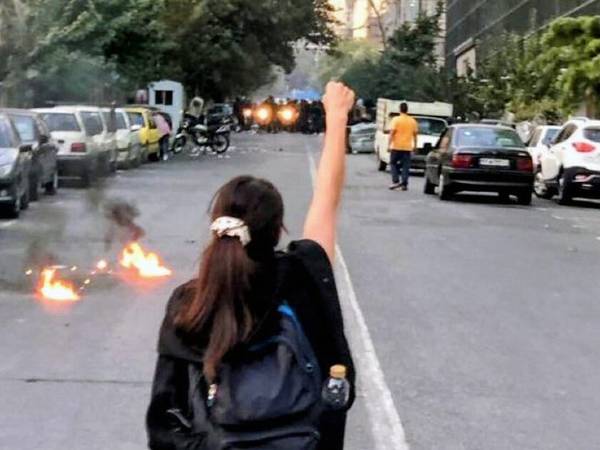The latest round of nationwide protests in Iran appears to be different from the protests that have rocked the Islamic Republic since 2017 in more than one way.
The protests that started in Tehran late evening on September 16 following the death in custody of Mahsa Amini, 22, was not triggered by financial hardships Iranians have been experiencing in recent years.
Mahsa Amini’s death, a young woman from the Kurdish town of Saqqez, who was reportedly beaten by the hijab patrol agents after her arrest in the street, symbolized pressures the clerical regime exerts on the social freedoms of the young generation, and the regime’s lawless behavior.
The initial gatherings near the hospital where she passed away, were meant to pay respect to an ordinary young woman who was murdered although she had modestly covered her hair and body in the usual black scarf and long manteau many women hate to wear in Tehran's heat even in early autumn. She had not committed a crime or engaged in a major violation of a religious rule.
The crowd, mainly women, gathering around the hospital were angry women many of whom had been earlier forcefully detained and intimidate for their loose headscarves. As an Iranian scholar pointed out earlier this week, the Islamic Republic looks at women's body as a battlefront.
The only thing that has remained of Islam in the Islamic Republic that is overwhelmed by corruption, poverty, unemployment and millions of young men and women with no jobs, no home, no future, is hijab; the arbitrary dress code introduced by hardly educated clerics who have not seen any other country Islamic or otherwise, cannot speak Arabic, which is the language of the holy Koran, have never read a single non-religious book in their lifetime, and can enforce their rule only through coercion.
While the police continued beating protesters and state officials continued telling outrageous lies to explain the young woman's death, the protests spread to the rest of Tehran, particularly its universities, as well as many cities and small towns in various provinces, particularly Iran's culturally rich Kurdistan Province where the young woman came from.
A large part, and at times, most of the protesters are women, although the protests are now less about hijab and more about confronting a dictatorship that has been imposing the clerics' fanatical lifestyle on ordinary Iranians for 43 years. At the same time, many regime officials sent their family members to Europe, the United States and Canada to follow a luxurious lifestyle that has nothing to do with the way of life the clerics impose on the rest of the population.
Many social media users noted that the latest round of protests in Iran is being carried out by the country's embattled middle class. Analysts used to say that protests after 2017 were championed by barefoot hungry men living in the margins of big cities. In the Autumn of 2022, it is more middle-class young men and women who have taken to the streets fearlessly. In many of the videos going viral on social media, fragile young women are seen shouting at policemen with shabby beards and big bellies who brandish their brand new heavy Chinese batons one of which probably shattered Mahsa Amini’s skull.
Many of the protesters are born after 2000. They are the generation Z that the Islamic Republic and its clerics have no idea about. The aging officials do not know who they are and what they think. They are the social media generation that the Islamic Republic, its medieval clerical rulers and old-fashioned police force with their outdated weapons can hardly understand. They have their own slang and jargon, and do not care for the "values" the clerics propagate and their untrained militia try to enforce. This is an anachronic dictatorship. Like a cart pulled by donkeys amid a modern expressway. Not only they cannot move forward, but they also disrupt the flow of traffic for those who have the right vehicles for the 21st century.
Iran's Supreme Leader is to meet with his top brass early Wednesday morning. While millions of young middle-class highly educated Iranians that have taken to the streets in recent days are determined to push forward and ignore the barriers, he is likely to persuade his poorly educated, fanatic, obedient militia to shut down the Internet as the "mother of all evil" and use their fire-arms more rigorously to crack down on "rioters, separatists, seditionists and agents of foreign powers," as he and Iran's other hardliners brand those who struggle for civil liberties.
Agent Provocateurs have already paved the way for the crackdown by setting fire to the Islamic Republic flag. A scenario we all know from the 2009 protests to the present day. It's the regime's suppressive might versus the young generation's determination. The winner will be determined in the long run.
In the meantime, ironically, as some social media observers have noted, the police is likely to continue beating people to prove that Mahsa was not beaten to death.
